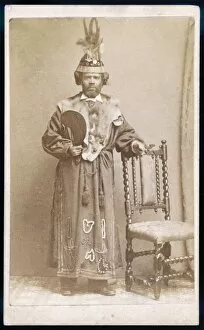Implement Collection (#9)
"Unveiling the Legacy of Implements: A Glimpse into History" Step back in time as we explore a diverse array of implements that have shaped our past
For sale as Licensed Images
Choose your image, Select your licence and Download the media
"Unveiling the Legacy of Implements: A Glimpse into History" Step back in time as we explore a diverse array of implements that have shaped our past. From Leon-Maxime Faivre's captivating painting "Deux meres (Two Mothers)" to the ancient Prehistoric Acheulian hand axe dating back to 600, 000 BC at St. Germain en Laye, these artifacts offer us a window into bygone eras. Traveling through centuries, we encounter Coopers croze planes from 1735 and beyond, witnessing their evolution over time. The primitive Iron Crusie Lamp illuminates our path with its humble yet essential role in early lighting systems. As we journey further, an enchanting SNCF poster transports us to Chamonix, France - a testament to the artistry and allure of travel advertising. Meanwhile, the Quadricycle Hose-Carrier reminds us of innovative transportation solutions that once roamed our streets. Venturing eastward, Japan's Charcoal Dealer beckons with its cultural significance and traditional trade practices. In Germany's Mittenwald district stands Matthias Klotz Monument - paying homage to a renowned violin maker whose craftsmanship echoes through generations. Industrial marvels also emerge from history's depths; R. P. Fisherman & Co. 's oil mill showcases technological advancements in pressing various oil seeds during the late 19th century. Richard Raupach's Brick cutter unveils how clay slabs were meticulously separated for construction purposes during this era. Our exploration culminates with Roman agricultural tools from Spain and Maori Weapons and Implements of War - testaments to human ingenuity across different civilizations throughout time. These implements serve as tangible reminders of our ancestors' resourcefulness and creativity while offering glimpses into their daily lives. Let us cherish these relics as they bridge the gap between past and present, inspiring awe for those who came before us.



